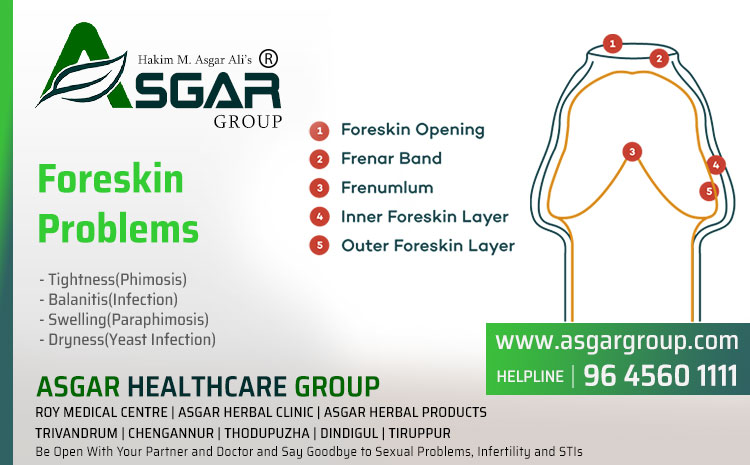
The foreskin is a roll of skin that covers the end of the penis. When you’re born, the penis has a foreskin. People who have been circumcised have had their foreskin removed for cultural, religious, medical, or aesthetic reasons.
If you do have a foreskin, it’s important to look after it. This means gently washing inside and outside your foreskin with soap and warm water daily. It also means paying attention to any changes to your foreskin. If it becomes difficult to pull back, red, swollen, or inflamed, or develops lumps, it’s a good idea to see a doctor, to make sure you avoid any long-term damage.
Let’s dive into what the most common foreskin problems are, how each one is treated, and how you can prevent future issues.
If you do have a foreskin, it’s important to look after it. This means gently washing inside and outside your foreskin with soap and warm water daily. It also means paying attention to any changes to your foreskin. If it becomes difficult to pull back, red, swollen, or inflamed, or develops lumps, it’s a good idea to see a doctor, to make sure you avoid any long-term damage.
Let’s dive into what the most common foreskin problems are, how each one is treated, and how you can prevent future issues.
Tightness (Phimosis)
Phimosis is a condition where your foreskin is too tight, or the tip of your foreskin has narrowed and can’t be pulled back to expose the head of the penis. Phimosis can cause you to experience severe pain when you have an erection or during sexual intercourse. It can also cause injury to the foreskin, leading to minor bleeding and infection.
Balanitis
Balanitis is a common infection that occurs at the head of the penis. It can happen at any age, but it’s more likely to develop if you have a foreskin.
What are the symptoms of balanitis?
• A foreskin that can’t be pulled back
• Itchiness or a rash
• Pain or tenderness at the head of the penis
• A red or swollen foreskin
• Discharge from the penis.
What are the symptoms of balanitis?
• A foreskin that can’t be pulled back
• Itchiness or a rash
• Pain or tenderness at the head of the penis
• A red or swollen foreskin
• Discharge from the penis.
Swelling (Paraphimosis)
Paraphimosis happens when your foreskin is pulled behind the head of the penis, and can’t go back to its original position.
If your foreskin stays in this position, it can cause pain and swelling and can stop blood flow to the penis. This is a serious medical problem, and has to be treated immediately so that you avoid long-term damage to the penis.
What treatments are there for paraphimosis?
The first thing to do is to apply ice to the area to help reduce any swelling, and then try to move your foreskin forward, using lubricant, to its usual position. Your doctor can also inject certain medicines that reduce swelling.
If the foreskin does not go back to its normal position, a surgeon may have to cut the foreskin to release it, or an urgent circumcision may be needed.
What treatments are there for paraphimosis?
The first thing to do is to apply ice to the area to help reduce any swelling, and then try to move your foreskin forward, using lubricant, to its usual position. Your doctor can also inject certain medicines that reduce swelling.
If the foreskin does not go back to its normal position, a surgeon may have to cut the foreskin to release it, or an urgent circumcision may be needed.
Dryness
Dryness around or under your foreskin is often caused by a yeast infection, also called thrush. Foreskin yeast infections are a result of overgrowth of a fungus known as Candida albicans. You can get it from having unprotected sex with someone who already has an infection. But it can also result from not cleaning your penis and foreskin regularly and thoroughly.
Besides dryness, you may also experience :
• red or white bumps
• irritation or redness
• cottage cheese-like discharge from under your foreskin
• foreskin tightness
Besides dryness, you may also experience :
• red or white bumps
• irritation or redness
• cottage cheese-like discharge from under your foreskin
• foreskin tightness
Summray
If you’re intact (uncircumcised), there are some health issues you can run into if you don’t take proper care of your foreskin. Some of these issues can be uncomfortable, and others require emergency medical attention to prevent long-term complications.













